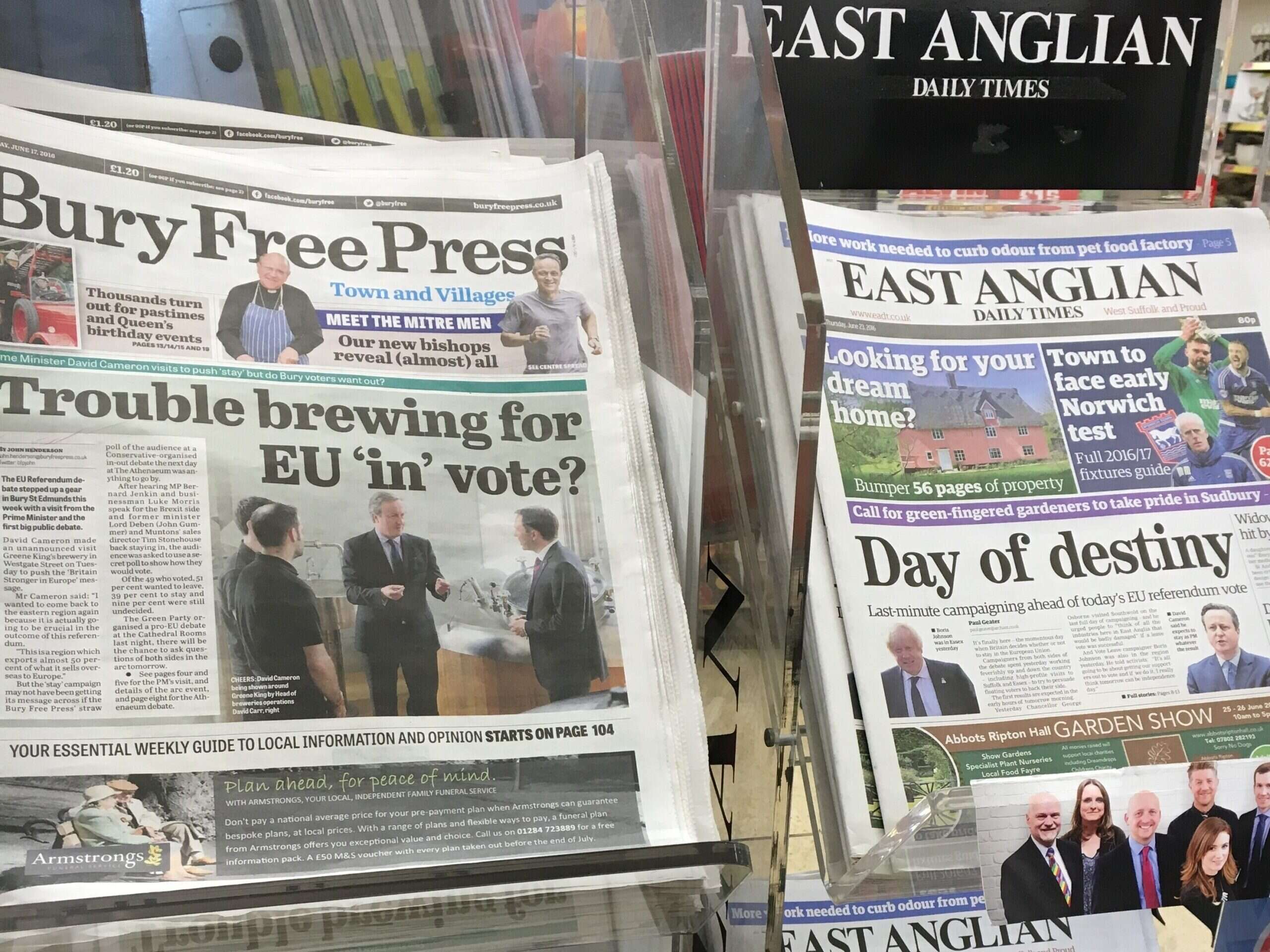
Much has been said about the decline of local newspapers, but local communities are turning to newspaper websites in record numbers, and there are many new innovations and developments emerging. That’s the story a new report published by Enders Analysis highlights today.
The extensive research report on local news media signals some encouraging innovations and strengths underpinning the industry’s transformation from the print era to the online era.
Local media are reaching more than 40 million adults every month. Publishers are developing new journalism formats and services and are building out an audience economy alongside impressive advertising success.
The report from Enders Analysis details some particularly encouraging examples. Among these case studies of both long-established and start-up businesses, there are common threads.
Business rhythm is not defined by manufacturing practices, with journalism and other functions operating discretely, but by consumer service practices that are cemented by deep, trusted collaboration between teams.
Additionally, investment and sponsorship of transformation are provided by owners who believe in the value of their journalism practices to local communities in the long term.
‘Local media trusted by most people more than national news media’
It is important to remind of the simple reason why local media matters. The report defines local media as community media in various guises and scales and explains its importance for democracy.
Local media is trusted by most people more than most national news media and social media.
Studies show political engagement materially retreats in the absence of local media. The risks associated with local media decline are not merely financial: they affect us all as citizens.
News deserts, a huge problem in the US and an increasing risk in the UK, leave the public uninformed about council expenditure, health and education services, crime, business and so on.
Sceptics will argue social media such as Next Door, Whatsapp, Facebook, and Twitter (et al) satisfy community needs, but there is an enormous gap between platforms populated by user content (however valuable) and the practice and value of professional journalism.
Local media has long been under intense financial pressure, with revenue decline and margin squeeze.
Journalism is an expensive activity, local journalism particularly so. Print is rapidly declining, and while online-only news services will proliferate, the depth of expensive journalism services is under pressure.
Lifestyle journalism serves a particular purpose, but not a comprehensive one. Consumer needs are being addressed by a relentless variety of non-journalism products, from Rightmove to Instagram and Tiktok.
Role of the BBC
Meanwhile, the impact of BBC activities online creates a particular challenge in local news. BBC digital services serve local and regional communities, competing with commercial publishers.
Precisely how the BBC implements its mission and public purpose bumps up against, rather than perfectly complements, the objectives and challenges of local commercial media.
Ideally, local media and the BBC would work more closely together at a much more granular planning level to design and reinforce complementarity – exactly as they have done with the Local Democracy Reporting scheme.
The report from Enders Analysis considers the next five years to be a critical period for local media as industrial print provision enters its final phase – although smaller-scale print may last indefinitely – and businesses will have to transform themselves into sustainable digital media.
The role of digital platforms – Google, Meta, Apple and others – will be crucial during this period.
Competition regime reform is underway to address the value exchange between news providers and tech platforms.
The report makes some firm recommendations for the government, including making better use of local media as an advertising platform, as it did successfully during the pandemic.
The Cairncross Review from 2018 provides a foundation for support that is still relevant, and too little has been implemented today.
In the medium term, stakeholders from across the business community, investors, advertisers, local and regional institutions, digital platforms, public policy designers and even the public itself all need to be encouraged to lean into play a role in supporting the efficiency, impact and commercial independence of local media – the single most important media in any well-functioning democracy.
In this scenario, we are all winners.
Email pged@pressgazette.co.uk to point out mistakes, provide story tips or send in a letter for publication on our "Letters Page" blog
